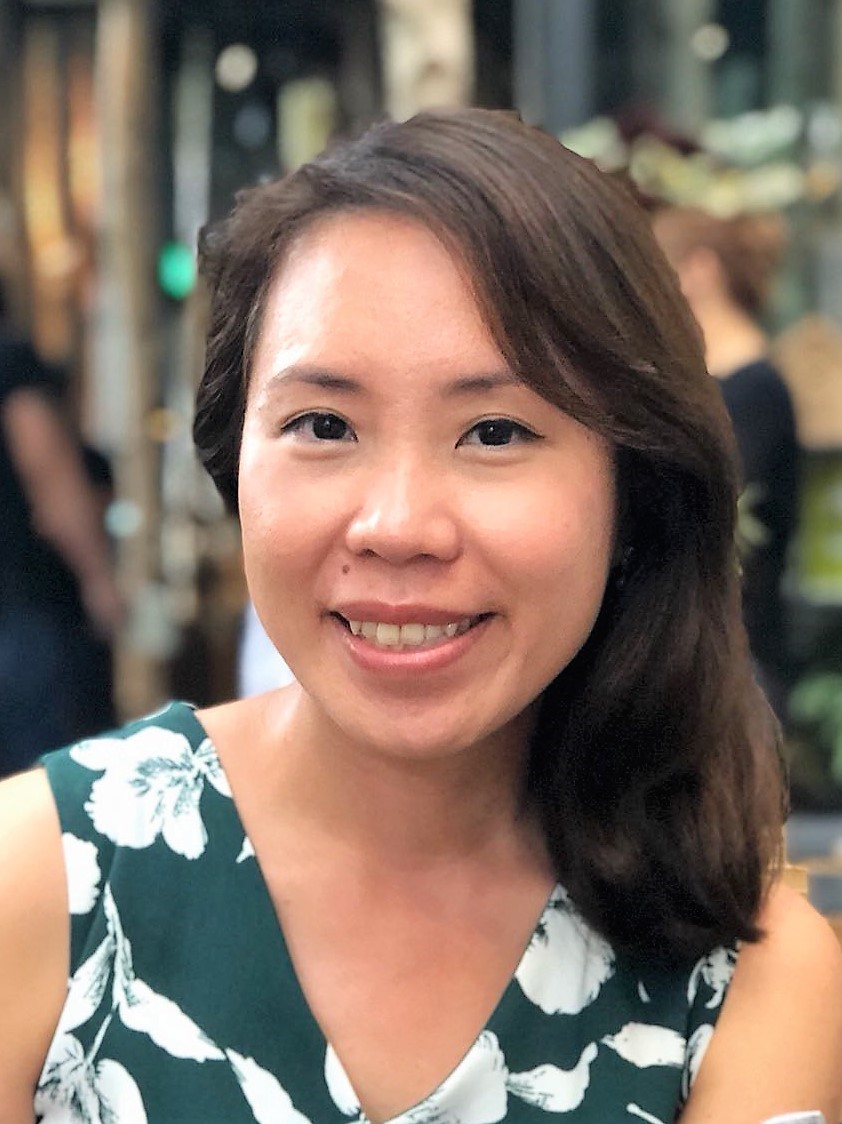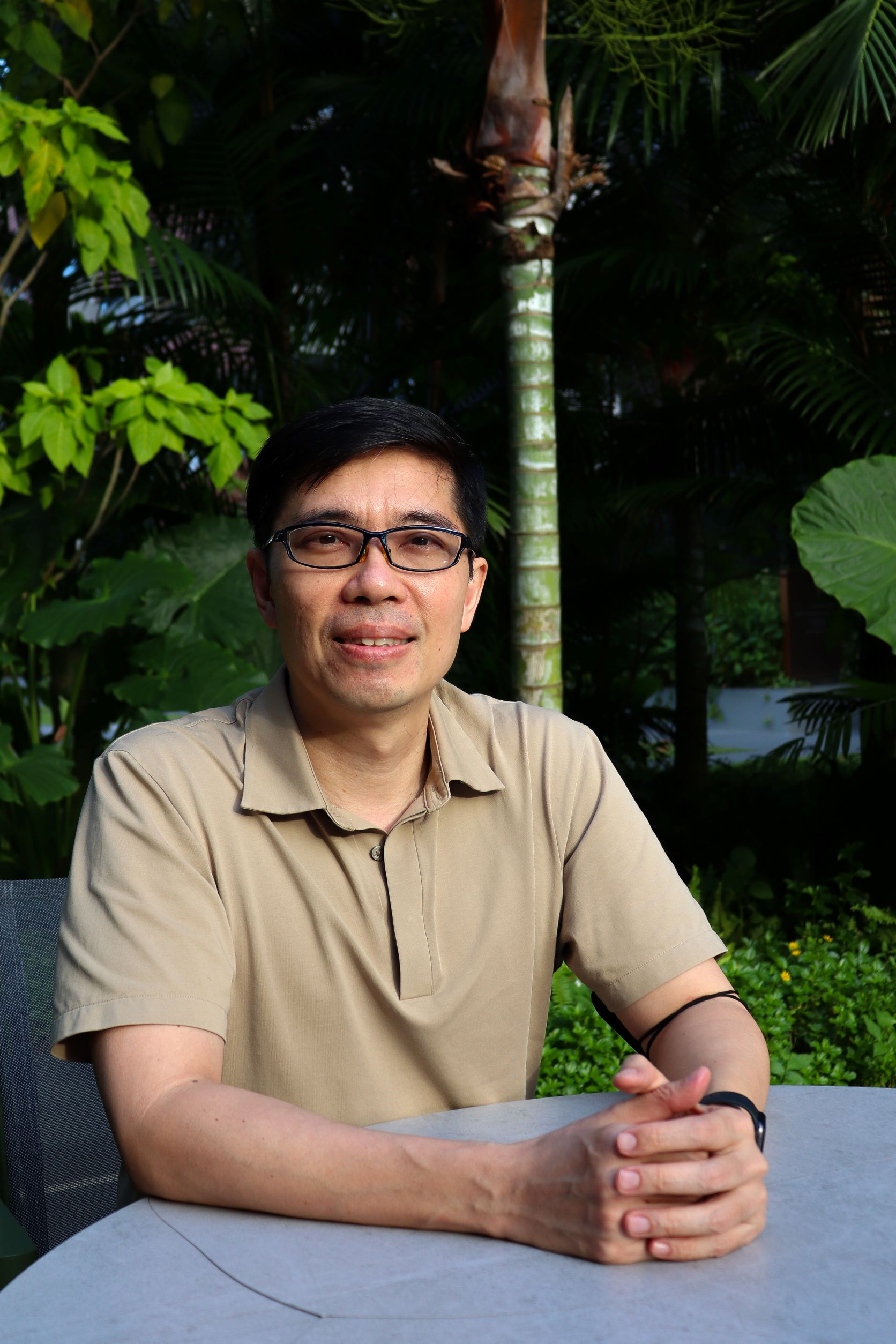Profile: Up close with Assistant Professor Lee Eng Sing
 | By Kimberley Wang, Manager, Media and Publications, Communications and Outreach |
How can we create a care network that fits people instead of asking people to fit the existing network that we have created? This is a question that drives Assistant Professor Lee Eng Sing’s research in multimorbidity, an area that is especially pertinent to Singapore with its rapidly ageing population.
Appointed as Director of the Primary Care and Family Medicine Research Programme at LKCMedicine in July, Asst Prof Lee is also Senior Consultant, Family Physician at the National Healthcare Group Polyclinics (NHGP). In his new role, he will strengthen the contribution of Family Medicine and Primary Care to the well-being of patients and their caregivers and continue to foster collaborations between LKCMedicine researchers and NHG primary healthcare clinicians to further develop joint research capacity and capability.
We speak with Asst Prof Lee on his plans to promote research in Family Medicine and Primary Care in Singapore and how this is in line with the government's Healthier SG strategy for the betterment of the health of all Singaporeans.

Q: Share with us about your role as Director, Primary Care and Family Medicine Research Programme.
My role is to promote research in Primary Care and Family Medicine (PCFM) in Singapore by facilitating high-quality research among family physicians and primary care clinicians to produce impactful research on practice and policy. This will involve developing joint research capacity and capability between LKCMedicine researchers and NHG primary healthcare clinicians. The ultimate aim is to strengthen the contribution of PCFM to the well-being of patients and their caregivers.
Q: What are your aspirations for the Programme in the next five years?
To provide a conducive environment for PCFM researchers that include both clinicians and non-clinicians, doctors and non-doctors to interact freely to solve practical problems encountered in real life collaboratively. In the next five years, I hope to establish one to two PCFM flagship research programmes and attract family physicians and primary care clinicians to do their PhD in our department.
Q: And how will this help to improve the well-being of patients and their caregivers?
Research is a natural part of any scientific discipline. However, family medicine research is lacking in Singapore because most family physicians are busy with clinical work and are not trained to do research. Physicians who have been trained in research will be able to critically evaluate new scientific findings and determine whether the new evidence can be applied and provide better care to their patients. If family physicians are experienced in research, they will be better able to design high quality patient care and quality improvement in their practices to improve the well-being of their patients and their caregivers.
Q: What are your plans for strengthening collaborations between LKCMedicine researchers and clinicians?
Create opportunities for more conversations, more interactions and more communications between LKCMedicine researchers and clinicians. Then work with relevant stakeholders to create a conducive platform for deeper exchanges so that collaborative work will blossom naturally.
Q: The Primary Care Research Network recently celebrated its fifth anniversary. How do you envision tapping on the network to produce impactful research in family medicine?
Most of the members in the Primary Care Research Network are Private General Practitioners (GPs). With the initiation of Healthier SG, I hope to work with GPs on health services research that look at how to maximise gains in population health with limited resources and improve experiences of patients without healthcare provider burnout.
Q: At the same time, you are leading research in multimorbidity. Why is this research important for delivery of patient care?
Multimorbidity is defined as the complex interactions of several co-existing diseases in a single patient. It is a common phenomenon seen in the primary care setting especially with a rapidly ageing nation like Singapore. The current care model for patients with chronic diseases take reference from Clinical Practice Guidelines (CPG) developed for single chronic diseases. CPGs potentially reduce inappropriate practice variation, enhance translation of research to practice and improve quality and safety. However, single-disease CPGs are generally not applicable to patients with multimorbidity, the socially and economically disadvantaged and those with rare conditions because these patients are not included in the primary studies where the CPGs are based.
Therefore, when using CPGs without thinking of the overall context of a patient with multimorbidity, what clinicians do is to pile on more and more tasks on the poor patient. This is made worse when the patient sees different clinicians who do not coordinate their care plans as a team. Therefore, multimorbidity research is important as it asks a pertinent question: How can we create care that fits people instead of asking people to fit the existing care that we have created?
Q: How will the Programme contribute to Population and Global Health research at LKCMedicine?
An important characteristic of family practice is its strong link with and accountability to the community where the patient lives. PCFM is very much looking at the patient from the personal level. Population and Global Health (PAHG) is looking at the same patient from a populace level. They are both looking at the same patient but from different perspectives.
I am going to draw an analogy to subsidiary and focal awareness that was described by a great scientist and philosopher, Michael Polanyi. Hopefully, it can help to explain how interdependent PCFM Research is with PAGH Research.
“When we use a hammer to drive in a nail, we attend to both nail and hammer, but in a different way. We watch the effect of our strokes on the nail and try to wield the hammer so as to hit the nail most effectively. When we bring down the hammer we do not feel that its handle has struck our palm but that its head has struck the nail. Yet in a sense we are certainly alert to the feelings in our palm and the fingers that hold the hammer. They guide us in handling it effectively, and the degree of attention that we give to the nail is given to the same extent but in a different way to those feelings. The difference may be stated by saying that the latter are not, like the nail, objects of our attention, but instruments of it. They are not watched in themselves; we watch something else while keeping intensely aware of them. I have a subsidiary awareness of the feeling in the palm of my hand which is merged into a focal awareness of my driving the nail.”
Public health specialists put ‘focal awareness’ on effective policies and health education in driving the health of the population while at the same time keeping ‘subsidiary awareness’ on how the health of an individual patient can be affected. Family physicians put ‘focal awareness’ to maximise the health of the individual patient while at the same time keeping the ‘subsidiary awareness’ on how the health of the population is in the community. Both perspectives or ‘awareness’ are equally important and complement each other.
Q: While leading the Programme, how will your work at the Health for Life in Singapore (HELIOS) Study evolve?
Together with a few family physicians in NHG, we take care of the day-to-day result reporting of participants who attended the HELIOS study. We vet through the results generated and call up participants to refer them to their primary healthcare provider when abnormal results are detected. I will gradually play a lesser role in this day-to-day activity while leading the Programme. However, I will still be very much involved with my individual sub-projects that are closely linked to HELIOS study participants.
Q: Family medicine will feature strongly in Healthier SG. Share with us, how so?
Family Medicine provides personal, preventive primary care to patients (3Ps). It also provides co-ordinated, continuing and comprehensive care (3Cs). However, the 3Cs and preventive care are not done very well currently. This is because patients do not ‘stick’ to the same doctor. Private GPs use different clinical management systems that may or may not link with the National Electronic Health Records, and the current fee-for-service financial model does not promote continuity of care nor encourage preventive care. There are substantial price differentials between public and private primary care services that patients pay out-of-pocket and diverse uncoordinated healthcare services in the community.
Healthier SG is a programme that encourages every resident in Singapore to enrol with a primary care clinic who will provide a trusted lifelong relationship between each Singapore resident and his or her GP. These GPs will be supported with an integrated health ecosystem with the three healthcare clusters and community partners to provide better preventive care and chronic disease management to their enrollees using a capitation financial model of care. Key stakeholders will also be engaged to revamp or improve healthcare financing, manpower, data flows, as well as key monitoring indicators to support GPs for Healthier SG.
Once Healthier SG is rolled out, it will be the first time in Singapore where GPs will be able to provide high quality 3Ps and 3Cs to patients in the community. This is very much a ‘whole of government’ effort for the betterment of health for all in Singapore.
Q: As a Senior Consultant, Family Physician, what advice do you have for our MBBS students who are interested in specialising in family medicine?
I have two general advice.
Be very comfortable with ambiguity. As the first contact for all kinds of health problems, family physicians deal with a wide variety of problems, mostly in the early stages. As symptoms reported by patients are imprecise and often self-limiting, there is low prevalence of serious diseases, and comorbid conditions are often present. As a result, decision-making in primary care is very different from secondary and tertiary settings.
Be a systematic observer so that important red flags will not be missed and unnecessary diagnostic tests and investigations can be minimised to reduce treatment burden for patients and their caregivers.

